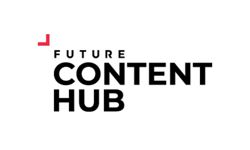Bob Dylan’s prophetic line, “Times they are a-changin”, feels like an entirely appropriate way to describe the current transition we are seeing in media as we head towards ‘digitally first’ engagement with consumers. This transition is especially true here at Future plc where digital is a key element of our strategy. The strategic relevance of this migration to digital is being driven by ever-changing and unpredictable consumer behaviour which, while exhilarating in a business like Future, also brings some uncertainty. This is why we are seeing a more prominent and evolving role for Customer Insight to ensure we tread carefully and make the right decisions in these changing times.
The (Helpful) Analogy
I’m sure we’ve all heard the analogy about Customer Insight and how it compares to the drunken man and the lamppost? No? Well let me help you out; it goes like this… Customer Insight is like how a drunken man uses a lamppost, more for support than illumination. I don’t especially take exception to this analogy. In truth I find it helpful, although the researcher in me thinks why can’t it be both? Research and its outputs - insights – to my mind have always been about both supporting decisions (so we can minimise risks) and creating new and illuminating insights on a new territory.
The Wave of Change
Here at Future, the ‘Insight Community’ is evolving to become more of a focal point for the business. Why? And why now? Well my view is that with the unprecedented level of change we are seeing in media consumption habits and device ownership, it’s never been more crucial that we understand the customers and where they stand.
As all publishers must be aware, riding the wave of change of declining print revenues and surging digital products, means that engaging with customers (our own and potentials) is pivotal to ensuring we stay relevant as the media landscape becomes ever more fractured.
As testament to this, Future is working hard to set up better, faster Insight reporting platforms, including investing in our own consumer panel of Future customers (more on this later), so we can ensure Customer Insight helps business decision making in these changing, uncertain times.
Towards the Light
Gut feel (the words that instil fear into any Insight professional) is often used as the stop-sign to delivering the view from actual customers back into a business. How many times have we heard someone (often the exec with the most years on the clock) say, “My gut feel is that customers will buy it”? Argh! Not good and not necessarily the right response when the decision being made could have significant implications for that brand’s customers. I remember customer satisfaction tanking at my previous company when someone took the decision to allow a particular offer to new customers only. Existing customers were deemed ineligible as we ‘didn’t need to reward them’. It seems bizarre, even writing this, that this actually happened, but it did. Suffice to say, the customer satisfaction scores and rising churn helped reverse this decision.
Having recently joined the world of media from a background in telecoms, entertainment and retail where Insight is already an integrated function, two things quickly struck me:
1) A real, genuine enthusiasm for how Customer Insight could help propel audience understanding
2) A relatively low presence of bespoke, externally commissioned market research to enable competitive advantage (although a wealth of syndicated insight / reports)
At Future, there is a recognition that competitive advantage and surviving in these choppy, uncertain times is about heading towards the light and engaging with customers.
The Customer Insight Evolution
As part of the evolution of Customer Insight at Future, we are striving to nurture an Insight culture, which takes time. It’s about developing an environment where employees are enabled to think and act like customers, so that they are better able to manage their brands. To do this, you have to step out of your current shoes and walk and think like your target audience. Here at Future, we find the table below a useful way of ensuring Insight-led behaviours. Where would your company sit?
Beyond encouraging and enabling employees to be their own ‘Customer Insight departments’, as it were, at Future we are also developing the role Customer Insight plays in making decisions.
It can be a challenging process as decision-makers are already pretty saturated in stats and don’t relish the prospect of lots and lots of information, spread-sheets, data tables, charts, etc that may muddy, delay or contradict their strategy
While I’m fine with Insight contradicting widely held beliefs as it represents the customers’ viewpoint on an issue / proposition / the latest creative, etc, I will challenge the perception that Insight will muddy or delay the decision making process.
If we remember the drunken man analogy from earlier, Customer Insight is there to support and illuminate by cutting quickly to the key insights arising from the data. We’ve heard Insight needs to be “digestible” and in “bite-sized chunks” but I would go further and suggest that to ensure Insight delivers value back to the business, it needs to be understood. Here’s my tip for ensuring Insight comprehension:
Tip: Present three key Insights or messages, but make the first one, something the business sort of already knows. Then make number 2 and 3 the new things which might challenge existing thinking or illuminate, if you will.
This tip is based on the very simple negotiation tactic as seen in countless Hollywood blockbusters, i.e.: give that person a little bit of what they want. If you do this, they’ll soften. Interestingly, you often see colleagues’ body language acquiesce and open up as they move into ‘information-receive’ mode. When you’re at this point, bingo – you can press ahead with the key points and this is when comprehension kicks in and decisions start being made based on Customer Insight.
Audience Insights
A key challenge which all media owners will be familiar with is that there is a need to continually articulate and demonstrate the value and scale of one’s audience across each of our assets, be it site visitors, Twitter Followers, Facebook Likers, magazine readership etc. For me, this is the raison d’etre for the Intelligence community.
This has become even more pressing as the touch-points through which customers access content diversifies. For instance, it’s now possible to access content from Total Film via the magazine, various digital version formats, the enhanced iPad edition, the website, through social media channels as well as CRM initiated comms. Pretty impressive but also pretty daunting unless a robust digital analytics and in-house audience measurement program is in place and readily accessible to dissect our “Big Data”.
Advertisers and media agencies rightly expect media owners to have these aggregated metrics readily available so they can make an informed decision about whether this is sufficient “eyeballs” for their brand and the next campaign.
Brand owners, or the appointed agency for that brand, are acutely aware of their brand’s target customer, brand positioning and strategy. They’ve sat through enough focus groups, internal workshops and briefings with their branding agency that they know exactly who their potential customers are.
This is where media owners have to step up to the plate and match this level of Insight and deliver that broader 360 degree picture of their audiences. This is where Customer Insight on your audience is pivotal to delivering that compelling commercial argument for why it’s the right fit for advertisers and their brands.
Audience Insights are not just about the volume but also about what they are like as people so a brand owner can look at our audiences and say, “Yep, that’s exactly who we think our brand is for”. The obvious characteristics that we are building up to facilitate this conversation are:
* Scale & Reach
* Demography (age, gender, social class, household income, children)
* Region (is the brand for urbanites only?)
* Technology Ownership – ie. I own an iPad
* Brand Category Engagement – ie. I game online for two hours per day
* Attitudinal Standpoint – ie. I’m passionate about new technology
Beyond this, the additional Audience Insights we can generate for commercial arguments centre on more lifestyle based behaviours and attitudes. To gather this information, you need to foster a close relationship with your customers and build a regular information exchange. The best way to do this is through a consumer panel, which I touched on earlier.
Towards illumination
At Future, we have a passionate and highly engaged customer base who regularly consume the content we deliver across multiple channels and touch-points. In fact, when it comes to conducting research, we regularly see response rates of over 80% (cf. 40% which is the norm for email surveys). Believe it when I say, it’s never been an issue getting feedback, it’s more been about getting this feedback into the business against challenging timescales.
Our response to the timescale challenge, and to ensure we are set up to deliver compelling and relevant insights on our customers, their lifestyles and brands they interact with has been to set up a consumer panel. Reflecting the importance with which we hold our audiences and the role we expect them to play, our panel is called the ‘Illuminate Panel’. It will number 10-15,000 customers making it one of the largest online community panels in the UK.
Whilst this will not represent the panacea for all things Customer Insight, it is certainly a huge stride towards illumination to support internal and external stakeholders and it’s a development we are hugely excited by.
Balancing priorities and expectations across a broad portfolio has been a key element in getting the consumer panel off the ground and it’s reassuring to see we already have strong interest from across the portfolio about how the consumer panel can help with decision making.
Our aspiration is that the consumer panel community will be a place where we can evaluate creative, test propositions and editorial content, discuss issues, gather feedback and slowly build up a 360 degree understanding of our audiences and brands and their consumption patterns.
We’re expecting big things from our customers as we, hand on heart, feel they have a key role to play in making sure we make the right decisions as the uncertain future slowly unfolds.












